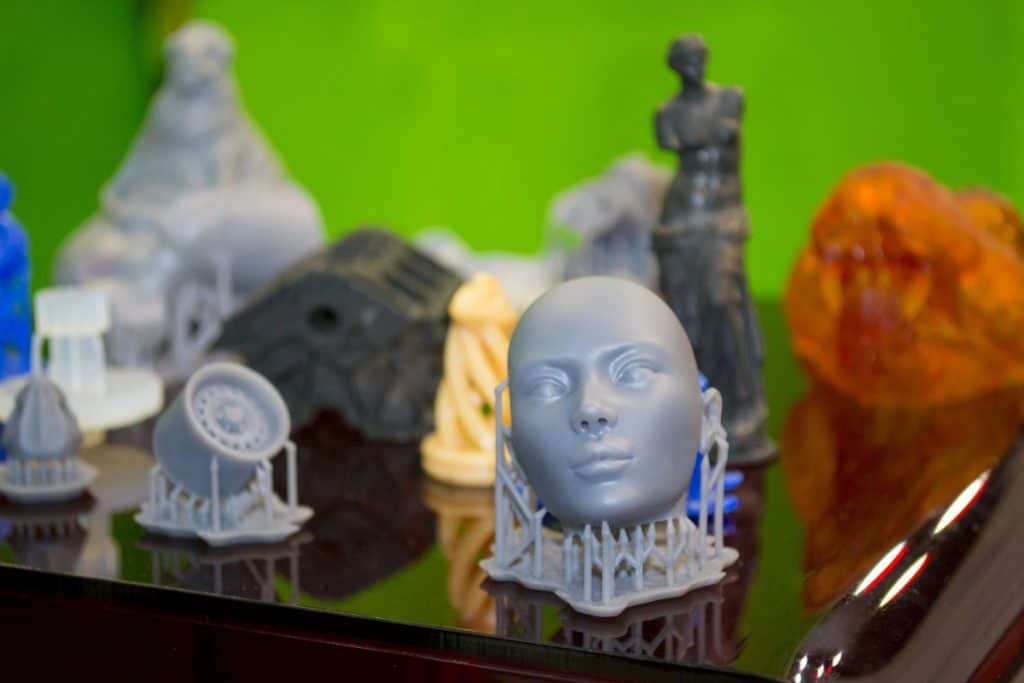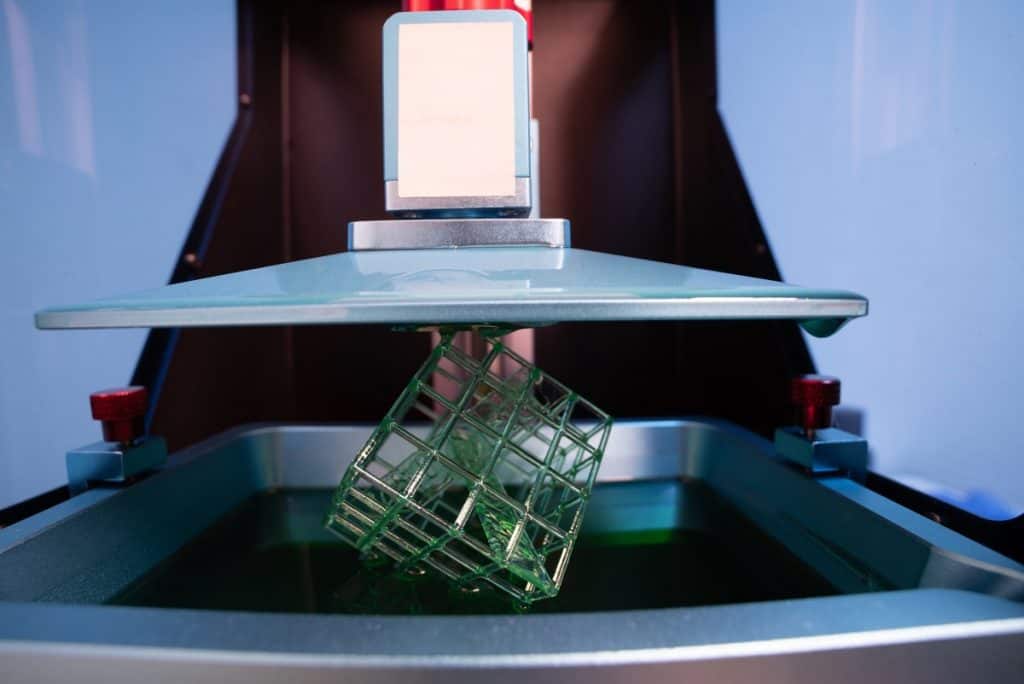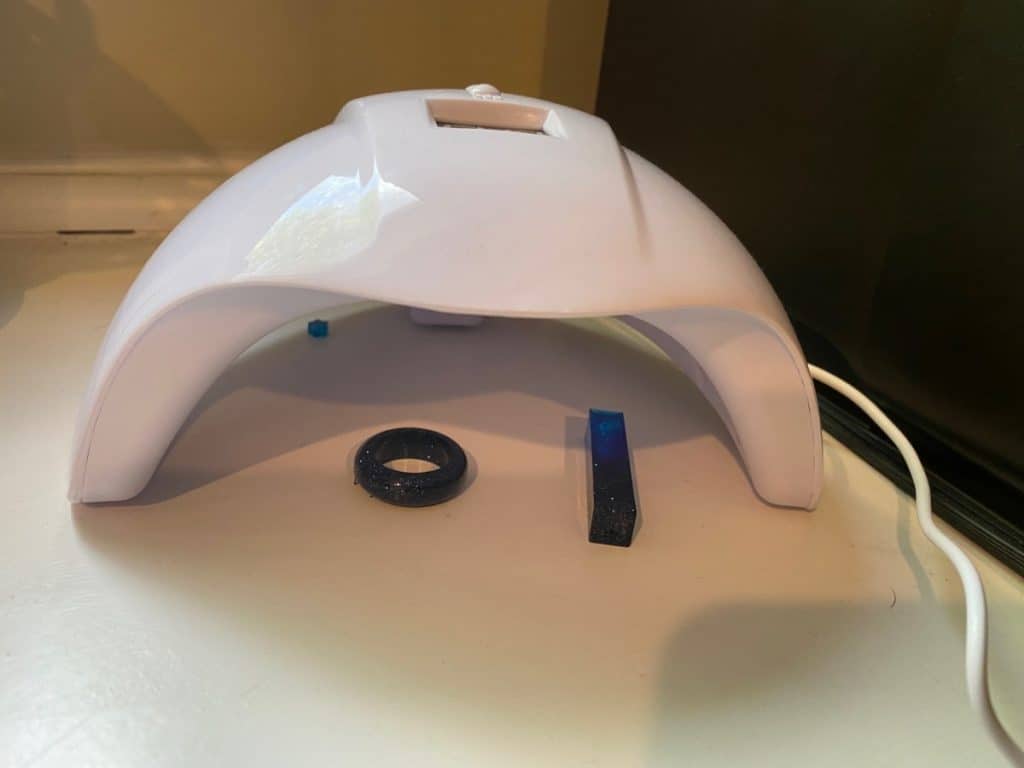If you’re getting more comfortable with the process of 3D printing, you may be questioning pieces of the process your manual told you are mandatory. Some hacks will help you cut costs, while others will help you craft your projects more efficiently. Is washing and curing something you can skip?
You should always wash and cure your resin prints because the resin is a toxic material. When your resin prints come out of the printer, they’re still covered in uncured resin. You’ll need to cure the prints to guarantee high quality.
Resin, when uncured, can be harmful. Below, I’ll discuss in detail the importance of washing your resin prints, techniques for cleaning them, and what’ll happen if you don’t wash them correctly.

Do You Need To Wash and Cure Resin Prints?
Cutting time or labor costs is a common desire when you start 3D printing.
3D printing is a pretty expensive hobby, and if you’re using your 3D printer to make products you’re selling, you may want to speed up the process. You may have read articles telling you where you can cut costs, what temperatures may speed up the process without harming your product, and so on. But what about curing your resin? Is that something you can skip and save some money on?
You need to wash and cure your resin prints. Resin is a toxic material that’s not recommended to touch skin and can make you sick long term. Not to mention, skipping this step in the process lowers the quality of your product and makes it challenging to paint on.
Let’s discuss strategies for curing your resin prints.
What To Buy To Cure Resin Prints
To cure your resin prints, you’ll need a few things in your toolbox. Some of these items are things you may already have around the house, while others you may need to go out of your way to purchase. As discussed above, curing resin prints is necessary to avoid dangerous side effects, so it will definitely be worth it.
Typically, when using resin, it’s a good idea to invest in the following:
- A pair of quality gloves to act as a barrier between the resin and your skin.
- A pair of safety goggles just in case something splashes.
How To Wash and Cure Resin Prints
Washing and curing your resin prints go hand in hand, but they’re two completely separate steps.
Washing your resin prints is the process of getting all the sticky residue off of your resin model, usually done with some form of alcohol while curing your resin prints is the process of letting them dry off in UV light to finish forming.
Some printer companies or resin supplies will offer products that make the curing process easier. If you didn’t purchase a wash and cure station with your printer or resin, you can usually go back to the manufacturer’s website and grab one. Or, if you’re trying to cut costs, you can check out all the options and select whichever one fits your budget. Just be aware that it may take some experimenting to get the formula down.
Regardless of your choice, you’ll begin with a rinse of your resin. For the wash, if you do choose to do it without a kit, you can check out one of the following:
- Isopropyl alcohol or IPA
- tripropylene glycol monomethyl ether or TPM (non-flammable)
- Dipropylene glycol monomethyl ether or DPM (non-flammable
Depending on the method you use, you’ll usually be pouring this chemical into a cup or tub that is big enough to fit your product and not overflow. As always, follow best practices when using chemicals.
To wash your resin print, you can use a few different methods.

Soak and Rinse
Here’s are the steps to wash and cure resin prints by soaking and rinsing:
- Fill a cup or a tub with your choice of alcohol. Be sure there’s enough to cover the top of your model, but not so much that the water will get displaced when you put your model in.
- Then, you’ll submerge your model into this tub. Use the alcohol to rinse your model, swirl it in the alcohol, or do what you can to make sure each part is touched.
- This may need to happen multiple times to ensure the resin comes off. You can use a brush to help make sure it gets in all the nooks and crannies.
Ultrasonic Bath
Ultrasonic baths are a more expensive option, but they’ll put your heart at ease if you worry about toxic exposures. This may come especially in handy if you want to sell your products in good conscience. An ultrasonic bath uses one of the alcohols listed above. All you do is submerge your product and let it sit for a few minutes.
Curing Resin Prints With a UV Light
Next, you’ll need to cure your resin print.
This is typically done with UV light. Just like some printers and resin products come with cleaning supplies, some will also come with UV lights custom-made for their resin product.
If you’re unable to purchase your brand UV light, don’t worry. You can just as easily buy a UV light online for curing resin or just a normal UV light. Some nail products require UV light to work, so it’s relatively inexpensive to get a UV nail light online or even a UV light used for decoration.
If you buy a UV light, you can create your curing station by putting tinfoil in a box or tub to reflect the UV. You can then place your project in the middle.
If none of this is within your budget, the sun has the OG UV you need to cure your resin. You can just place the product outside (away from any animals or children) and let the sun do your curing.

What Happens if You Don’t Cure Resin?
Uncured resin can put you at risk for health issues and toxic exposure. It can also make your product sticky to the touch and difficult to paint. Curing your resin print makes the product quality higher and protects you from the risk of toxic exposure.
You should always wash and cure your resin products.
What To Do if You Come in Contact With Uncured Resin
If you come into contact with uncured resin while not wearing your gloves, you should wash your hands with soap and water immediately. Though it may make sense to use hot water (maybe with the train of thought that it’ll help melt it off), you’ll want to use warm water, so your pores don’t further open and absorb the resin.
Printing Materials Alternative to Resin
If you don’t think resin is worth the risk, there are alternatives to printing with resin. You’ll likely need to invest in a new 3D printer that takes other materials. Some popular materials for 3D printing are:
- Poly lactic acid (PLA) filament, a plastic
- Acrylonitrile butadiene styrene (ABS), a plastic
- Polycarbonate (PC), a plastic
- Alumide, a powder
- Polyamide (Nylon), a powder
Related Articles
- Can You Put UV Resin Over Epoxy Resin? Details Inside!
- Why Is My UV Resin Sticky After Curing?
- How Long Does It Take For UV To Cure Resin?
- Why Are My Resin 3D Prints So Brittle?
- SLA Printer Resins
- Can You Resin Print Without Supports?
Conclusion
It’s essential to wash and cure your resin prints. Without washing or curing your resin prints, you are at risk for:
- Toxic exposure
- A low-quality product
- Sticky residue on your print
- Inability to paint on your product
Washing and curing your resin print doesn’t have to be complicated. You can either purchase or create your own wash and cure station. The investment will be worth the quality.
Make sure you check out our YouTube channel, and if you would like any additional details or have any questions, please leave a comment below. If you liked this article and want to read others click here.
